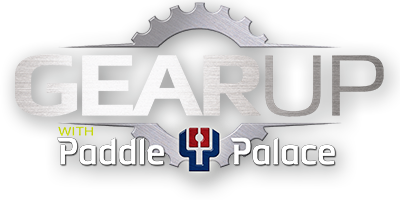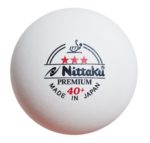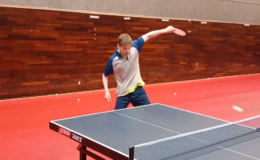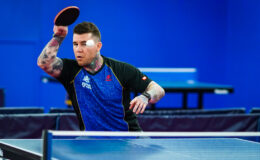by Samson Dubina
In table tennis, there are some standard serves and there are also some unusual serves. Should you be creative or just follow the crowd? Well, creativity is always good, but there are a few basic principles that you need to follow when coming up with a new motion…
#1 Multiple Spins
When you develop a new serve, make sure that you can serve various spins with the same motion – maybe backspin, backspin sidespin, sidespin, sidespin topspin, topspin and no-spin. It is great to have a spinny serve, it is even greater if you have tricky spin variations of it!
#2 Multiple Degrees on Spin
Within the same spin, you also need to be able to serve various degrees of the spin. These subtle variations might not cause your opponent to miss outright, but might give you an advantage with a weaker return. When returning serves, many opponents look for the type of spin but not the degree of spin!
#3 Multiple Speeds and Depths
When you develop a new serve, you need to be able to serve short, medium, and long with a similar motion. Also, with the short serve, you should be able to control the depth and speed being able to serve short slow serves, short medium speed serves, and short fast serves!
#4 Height Control
When you develop a new serve, can you control the height of all the short, medium, and long serves! TT-Serve™ is a great tool to help control the height, but also the motion you develop, the touch you develop, the contact point you develop, play key roles in controlling the height!
#5 Next, Next, Next
This is the big key! What comes AFTER your serve? Are you able to play a strong flip, loop, smash, or counterloop after your serve? It sometimes takes only weeks or months of practice to develop a serve but often takes years of experience to be able to play really well after the serve. How are you going to 3rd ball attack then 5th ball attack then 7th ball attack? Does this new serve fit into your main game-plan allowing you to play the types of rallies that you want to play?
#6 Trial and Error
Every new serve needs quality repetition in serve practice, drills, matches, and tournaments. A new serve isn’t a weapon until you have confidence to use it during important moments being able to control the spin, height, depth, speed AND you have confidence to play the next ball afterwards with excellent quality and control!
#7 Primary and Secondary
Keep in mind that your new serve doesn’t need to be your primary serve! Every top player should have one primary serve that he feels best sets up his rallies, but your new serve doesn’t necessarily need to be that exact serve. You should have 1 primary serve and 1 or 2 secondary serves. Each of these serves should have at least 4-5 variations from different positions to different positions with different speeds, spins, and depths.
In conclusion, I want you to check out this new serve I’m developing right now! It is called the reverse backhand pendulum serve. I have been developing it for awhile and can get very good spin. I’m still learning to control it and more importantly learning how to play the rally afterwards! Play me in the next tournament and you will be sure to see me unleash some backhand reverse pendulum serves at you! Watch out!
Samson uses the Nittaku Acoustic Carbon Large Grip Blade with Nittaku FastArc G1 rubber on both sides along with Nittaku 3- Star Premium 40+ balls.









